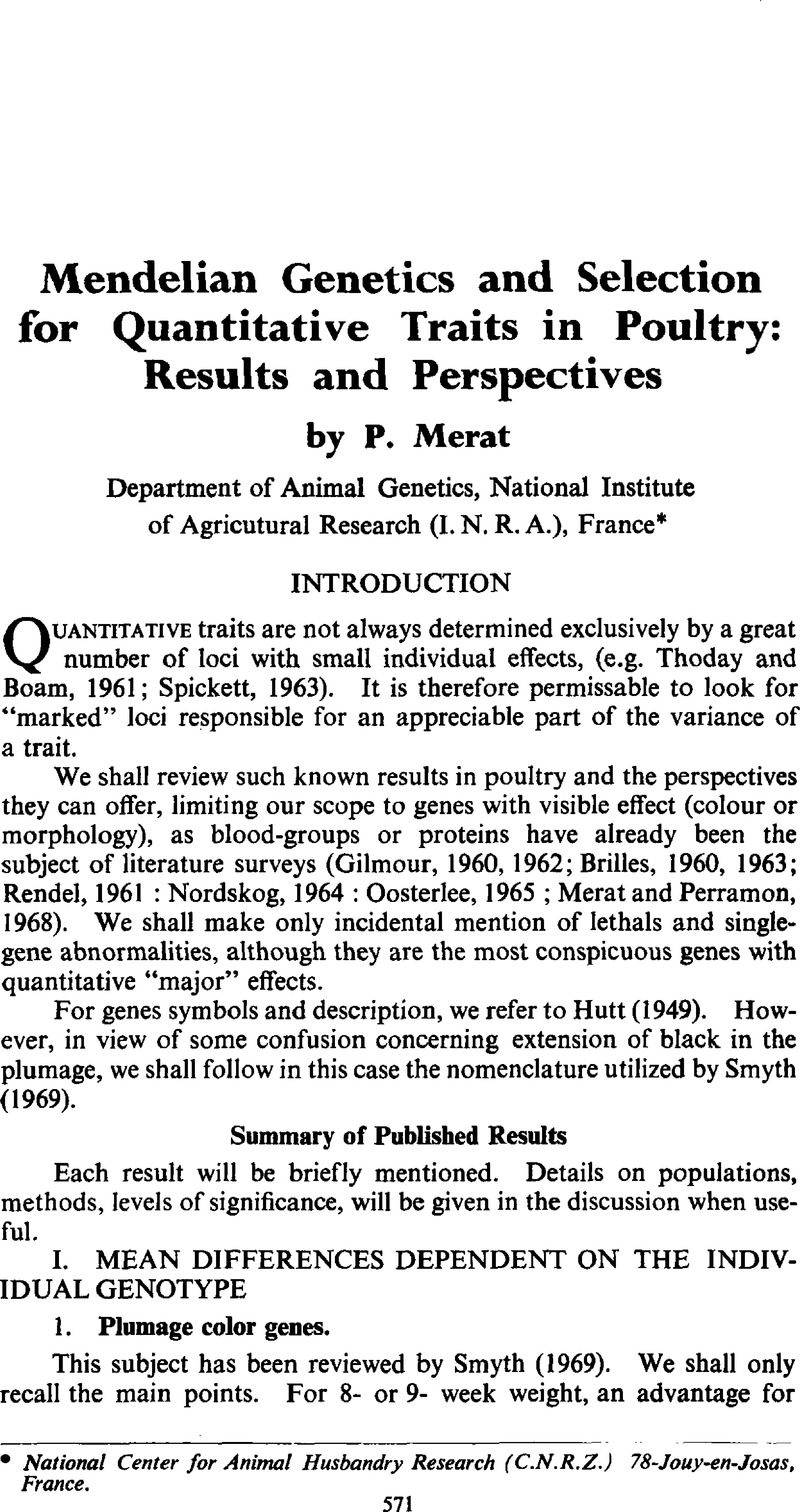Crossref Citations
This article has been cited by the following publications. This list is generated based on data provided by Crossref.
Custodio, R.W.S.
and
Jaap, R.G.
1973.
Sex-Linked Reduction of Body Size in Golden Sebright Bantams.
Poultry Science,
Vol. 52,
Issue. 1,
p.
204.
Somes, R.G.
and
Jakowski, R.M.
1974.
A Survey of Possible Associations Between Morphologic Traits and Resistance to Marek’s Disease ,.
Poultry Science,
Vol. 53,
Issue. 5,
p.
1675.
Merat, P.
Bordas, A.
and
Coquerelle, G.
1979.
The relationship of several genes suppressing plumage colour with body weight, food intake and feather loss of laying hens.
British Poultry Science,
Vol. 20,
Issue. 6,
p.
587.
SOMES, RALPH G.
1980.
The Influence of the White-Wing Feather Plumage Gene Ww on Various Quantitative Traits in Chickens.
Poultry Science,
Vol. 59,
Issue. 11,
p.
2386.
Custódio, Randolfo William Silvestre
1997.
Genetic interactions involving major genes at the dwarf locus in egg-type chickens.
Brazilian Journal of Genetics,
Vol. 20,
Issue. 3,
p.
363.



